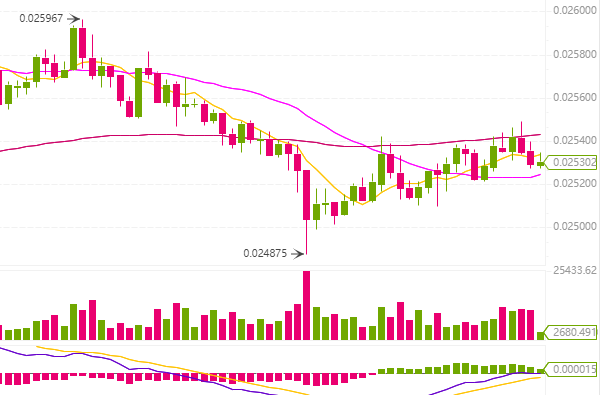Hello guys, my name is donnest, an Algorand ambassador, and like always, I would be exposing you to some critical features of the Algorand blockchain. And it is undeniable the world is currently evolving around digital technology; that is why we seek innovations and inventions to enhance existing businesses and fintech. The Blockchain is gradually finding its way into almost every sector of the world’s economy with the sole aim of making transactions across a network of computers fast and secured.
Briefly, the blockchain is a mechanism that incorporates data or data from various transactions spread through computer networks. Each data in a blockchain is stored in blocks then checked by a decentralised computer network before obtaining a unique code known as a hash and attached to the last set of blocks.
We all know that Blockchain holds massive transactional data and public key and smart contract information, but it consumes a lot of energy to accomplish this. Blockchain entries do not last forever, scalability, decentralization and permissions remain the Blockchain’s limitation, and it is not indestructible.
Why Algorand
Algorand eliminates the technological hurdles that undermined the adoption, decentralization, size, and safety of mainstream blockchain for years. Without permission, Algorand guarantees complete transparency, pure proof of stake, security, and pace within a fully decentralized network. Algorand, a decentralized network with no borders, no limits, is here to stay; why not think of adopting this innovation.
The Algorand Consensus Protocol
The Algorand blockchain has been designed to allow multiple users with genuine intensions to hold more than 2/3 of the system’s total stake. This is achieved based on pure proof-of-stake (PPoS), utilizing a decentralized Byzantine agreement protocol.
Users can participate in the consensus protocol with a unique key generated from the system instead of the spending keys. Using involvement keys ensures that even if their participating node is compromised, the user’s Algos are secured.
The fact that users are selected to participate in the protocol based on the stake (number of Algos) makes this pure protocol proof-of-stake. That is the better chances of being picked, the more Algos per person.
The Algorand blockchain selects users randomly to anonymously participate in certification of blocks, which prevents malicious attack by a third party.
By evaluating a Verifiable Random Function (VRF) with its hidden participation key and the seed, a user secretly tests whether they have been selected to participate. If selected, they are nominated for the voting process, and the block will be certified if a supermajority of the votes come from truthful members.
Accounts are chosen in the block proposition stage to propose new blocks to the network. For any voting account that manages to see whether they have been picked to participate in the soft vote committee, each node will run the VRF, and the method moves to the qualification vote stage. Each node receives a certificate for the block and writes it to the ledger. Then the round starts over with new block proposers and voters.
Key Algorand Features
- Smart Contracts (ASC1 in Layer-1)
In our everyday life activities, we carry out the contract agreements involving third-party authentication e.g., Lawyers. This is sometimes slow, and most importantly, not cost-effective. Algorand’s smart contracts are trustless programs integrated into Algorand’s Layer-1 to bridge the gap between third-party authenticators and users without errors. Its unique functionality includes; Stateless and Stateful, Scalable, Fast and Secure, Reduced risk, Low cost to execute, Low barrier to entry, and Increased speed to market, Flexible Implementation. The algorand smart contracts allow developers to run the application without fear of error, with the same speed, scale, finality, cost-effectiveness, and security as the Algorand platform. With Smart Contracts offered by the Algorand blockchain, developers, investors, and companies, now carry out decentralized transactions, subscriptions, loan payment, Reimbursement validation, Regulated and automated disbursements, Interface with off-chain data providers, etc.
- Use Case
IDEX (Defi, Digital Assets) is a decentralized smart contract exchange that enables transaction and real-time trading. IDEX has incorporated its smart contract complexities onto the Algorand platform, which will allow full finality, tokenization of assets, and programmatic transfers at Layer-1.
- Algorand Standard Assets (ASA in Layer-1)
Mr. John is dealing with real estate; he owns and manages plots of land within the country. He deals with lots of financial transactions with agents, clients, and buyers. To authenticate his everyday transactions, he invites legal backings, which are time-consuming and cost-effective. On Algorand Standard Assets, Mr. John can represent his assets in the form of a token at a low cost due to Algorand’s minuscule transaction fees. He is given flexible asset reserve models to customize his business regulations and requirements. This will allow investors to access his digital assets in a secured platform while leveraging other digital markets with user protection. Its unique features include; fast and secure, low cost to execute, Assets insured with ease and simplicity; all assets issued can be operated universally. Algorand Standard Assets is made up of a Role-Based Asset Control, which allows Off-chain asset documentation and isolates defaulted assets for investigation while allowing specific approved addresses to transact within a particular address. Examples of the algorand asset include; In-Game Points, Stable Coins, Loyalty Points, System Credits, Cryptocurrencies, etc.
- Use Case
MELD GOLD utilised the Algorand Standard Asset core functionality to tokenize its digital gold, supported by Algorand wallet. This will allow users to monitor the value of their assets and transact with other wallets in a quick and secure way.
- Atomic Transfers (In Layer-1)
Atomic Transfers allow for a trustless, simultaneous transfer of several assets among many parties. The Algorand Atomic Transfers supports all Algorand assets (Algos and ASA) at a very low cost and with maximum speed. It also has a unique functionality that allows the technical transfer of complex assets with any third-party involvement.
- Use case
HUMMINGBOT is democratizing algorithmic trading through open-source software that lets you build and run customizable trading strategies. It utilizes the algorand USD Tether and USDC stablecoins payment methods, which allows them to pay out any amount of reward earned by investors, thus, achieving a cost-effective, Simplified, and expedited payment.
- Rekeying (In Layer-1)
In recent times most blockchain developers incorporate the system of using keys: the public address keys and the private spending keys to authentic crypto transactions. Today, these keys work dependently on each other. It is losing its efficiency and security because once a private key is comprised, it requires creating a new account with new public address keys, thus leading to interruptions of automated recurring transactions with peers or institutions. Without modifying their public address, Algorand Rekeying in Layer-1 enables users to change their private spending key, allowing for greater consistency, stability, and organizational efficiency. Its core functionality includes; Flexibility, Continuity, and Operational Efficiency.
- Use case
AIKON ORE ID, is a simple user onboarding and blockchain identity-as-a-service that connects businesses and their users to leading public blockchains – Algorand, EOS, Ethereum, and more. AIKON utilizes the algorand Blockchain, enabling developers and investors to migrate or re-assign their existing users to the algorand platform trustlessly.
Technical Advantages
Many typical blockchain networks use single or a few servers and are more vulnerable to cyber-attacks and technological failures. There is no apparent central authority or single point of control in the Blockchain of Algorand. Organizations manage nodes from varying backgrounds in several different nations.
In most traditional payment systems, transactions depend not only on the two parties involved but also on an intermediary – such as a bank, credit card company, or payment provider. Users do not need approval from trusted authorities to use Algorand Blockchain.
The Algorand node repository can be easily and readily available for public use built on the principles of transparency, inclusivity, and collaboration and maintained by a dedicated community.
It is typically very demanding to modify blockchain data or code and sometimes needs a hard fork, where one chain is abandoned and a new one is picked up. Algorand’s Blockchain does not fork, and users’ accounts stay secure even though the network is partitioned into several non-connected networks.
Despite the drawbacks in blockchain technology, Algorand blockchain presents its features and unique functionality to bridge the gap between developers and potential investors. With its decentralized and permissionless network, Algorand is on the verge of mainstream adoption. I urge industries, companies, investors, and developers to leverage this great opportunity to add more value and new experiences to existing blockchain technology.
The Wallet
Algorand wallet is a mobile app designed with Algorand key features with high security integrated with Ledger Nano X.







